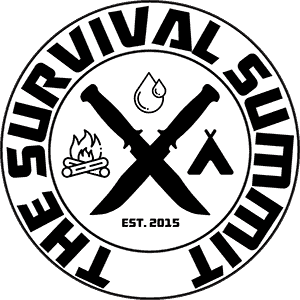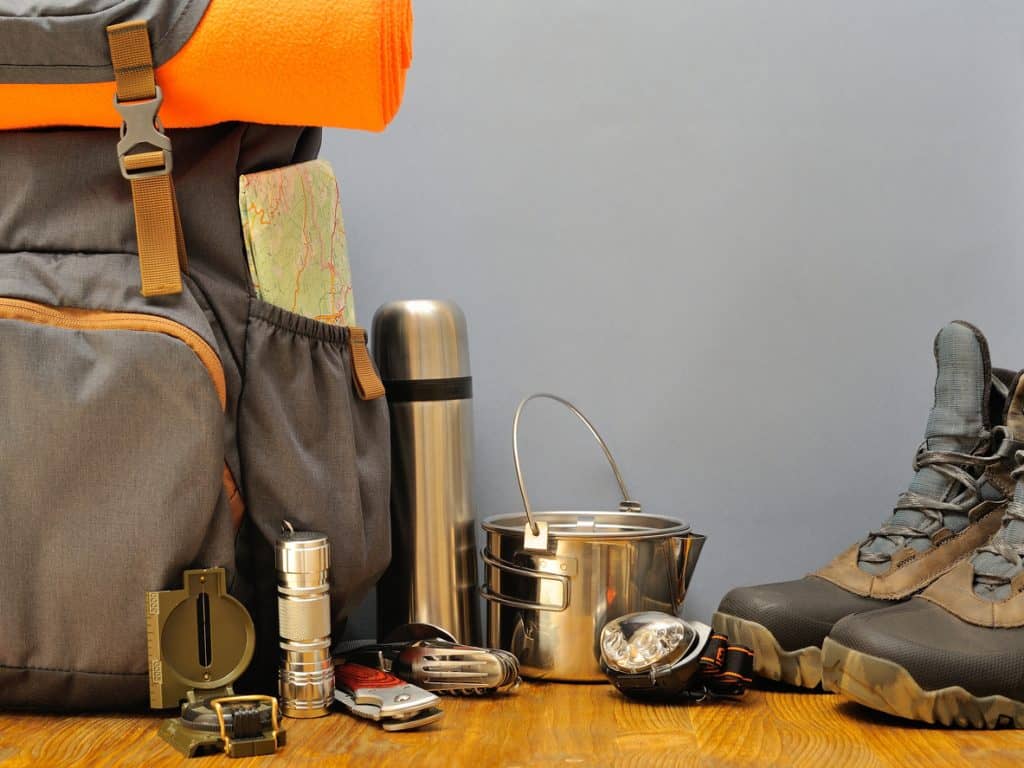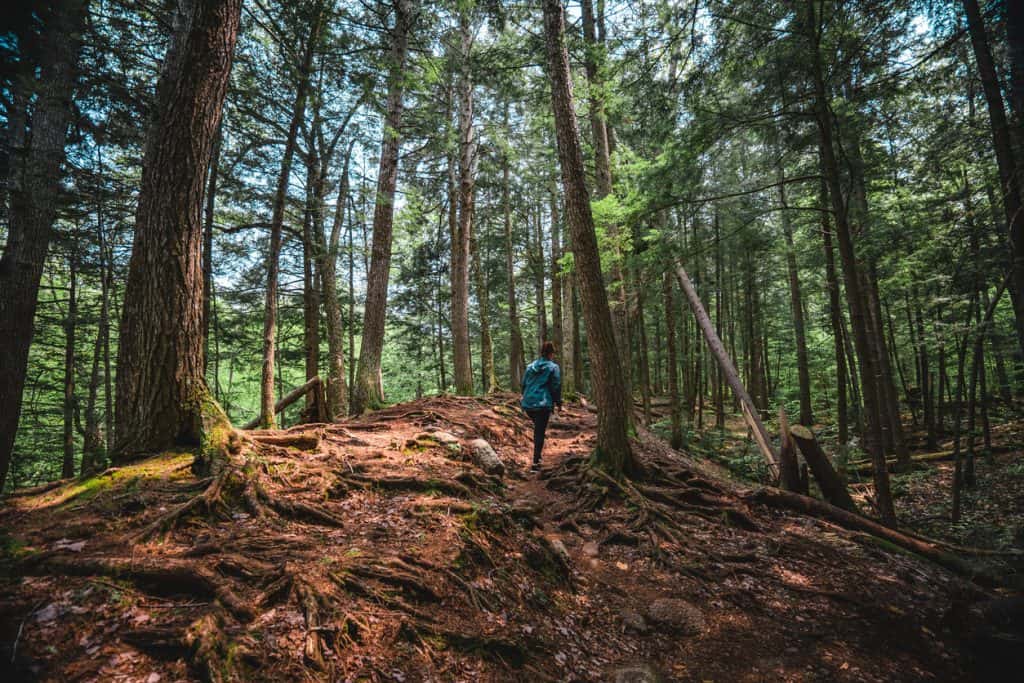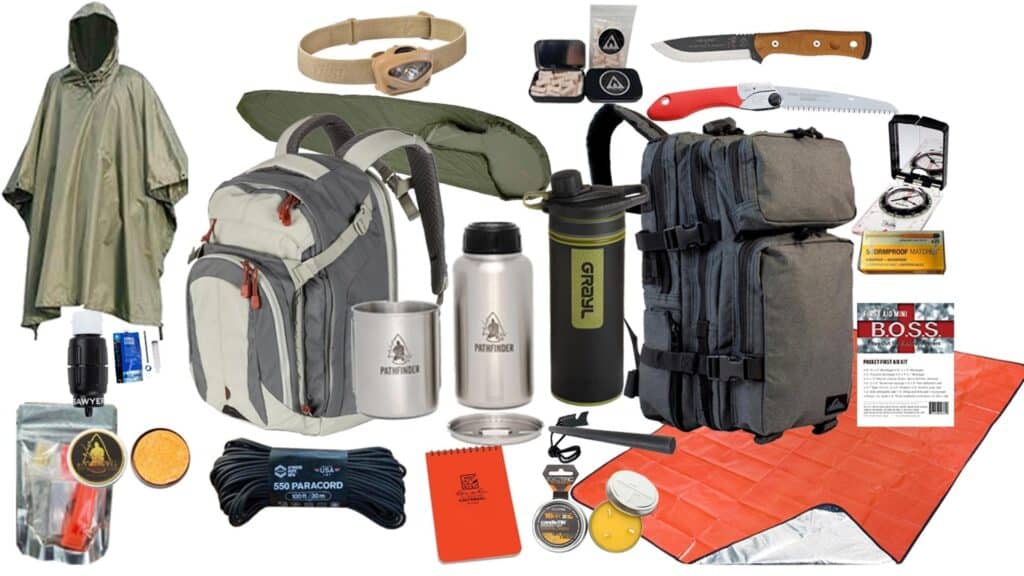Best Survival Kits
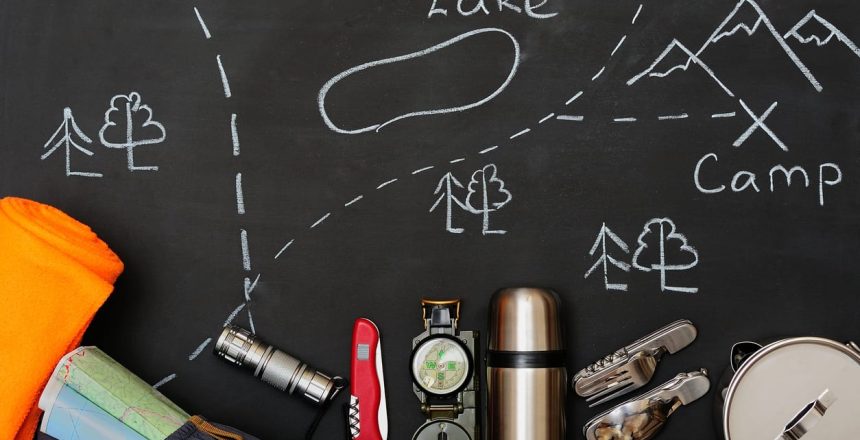
Best Survival Kits
This blog provides an overview of survival kits, including their importance in various scenarios, essential items to include, and tips for choosing and building a customized survival setup.
Aside from us, plenty of great companies are out there where you can get quality, field-tested Survival Kits and gear. We’ve provided links to a few other companies in this blog, some technically competitors, but we don’t care. Good gear is good gear, and good companies are good companies.
Overview of Kits
Survival kits are a fundamental safeguard for people who spend a lot of time outdoors, reside in areas susceptible to natural disasters, or wish to be primed for unforeseen emergencies, which we all should recognize are likely in today’s fragile society.
These kits should be meticulously assembled with a range of tools and supplies to support survival in dire situations, including but not limited to natural disasters, unforeseen accidents, or scenarios where one might find themselves lost in the remote wilderness.
Having a survival or “bug out” bag at one’s disposal is paramount; it not only bolsters the individual’s chances of survival but also significantly aids in a more expedient recovery process during and following an emergency.
Most of you probably have a vehicle emergency kit, but what if you get stranded and need to get home? Do you have gear for Shelter, fire, water procurement, food, signaling, land navigation, and emergency communications? If not, why?
The presence of a well-equipped kit is synonymous with preparedness and safety. It offers the tools for survival and instills hope and a sense of control over unpredictable circumstances, which can happen at the drop of a hat.
The essence of a survival kit lies in its ability to provide immediate access to essential survival tools and resources when they are most needed. A comprehensive survival kit is instrumental in bridging the gap between adversity and safety. This underscores the importance of not only possessing a survival kit but also ensuring it is tailored to meet the specific needs of the environment and the potential challenges one might face.
Essential Items for a Survival Kit
A comprehensive kit ensures safety and survival during unforeseen circumstances. First aid supplies are at the heart of every effective kit, crucial for addressing minor injuries or potentially life-threatening conditions. This category includes bandages, antiseptics, pain relievers, and more specialized items like tourniquets or thermal blankets, depending on the potential risks involved.
Water purification tools like filters, tablets, or single-wall stainless steel bottles to boil water are vital, as they facilitate access to safe drinking water. This fundamental need cannot be overlooked in survival scenarios.
Emergency food supplies, preferably non-perishable and high-energy, ensure nourishment over uncertain periods. Communication devices, such as talkies, Satellite phones, communicators, Ham radios, etc., could become critical if you are unexpectedly stranded or lost.
Customization amplifies a kit’s effectiveness, addressing specific needs based on anticipated scenarios, your traveling area, and personal requirements. This customization extends to considering the environment one expects to encounter, such as including sun protection for desert excursions or thermal gear for cold climates.
The goal is to prepare for the expected while being equipped for the unexpected, ensuring that each item in the kit serves survival and safety purposes. This approach highlights the importance of having a survival kit that is thoughtfully assembled to meet the unique challenges of different emergencies while still being able to travel light and fast.
Types of Survival Kits
Survival gear setups come in various forms, each meticulously designed to cater to specific scenarios, ensuring that individuals are adequately prepared for any situation. For outdoor enthusiasts, survival kits are explicitly tailored for camping and hiking, packed with lightweight yet vital tools such as maps, compasses, and compact emergency shelters designed to protect against the elements.
These kits prioritize mobility and efficiency, providing essential navigation tools and shelter without adding unnecessary weight to a backpacker’s load.
Be careful where you get some of the pre-made kits. Many are fairly cheap, so the gear is not top quality and may not work well or last very long. Buying kits on Amazon is a risk if you’re not familiar with the company that makes the gear.
We put together a checklist of tested gear that you can download HERE. We also have our “Build your own Bug Out bag” product, where you can choose items from each category.
Aside from us, there are plenty of other great companies: Survival Gear BSO and Gray Bearded Green Beret are both great companies. All three also have excellent resources for Live Training courses, the best of which is Gray Bearded Green Beret, in our opinion.
Survival kits for natural disasters, such as earthquakes, severe weather events, and home emergencies, are structured differently. They focus on the necessities for survival in a stationary setting. These kits often contain larger quantities of food and water supplies, blankets for warmth, and battery-powered or hand-crank radios for communication.
The emphasis is on sustaining life during prolonged periods of isolation or when access to regular services and supplies is cut off. For instance, a home emergency kit might include several gallons of water and high-calorie food bars, ensuring sustenance for a family for several days, alongside first aid supplies and flashlights with extra batteries.
Each kit serves a distinct purpose, highlighting tailored gear’s critical role in comprehensive preparedness strategies.
Choosing the Right Survival Kit
Choosing the right survival kit involves carefully considering several critical factors to ensure it meets your needs. The weight and size of the kit are paramount, particularly for those who intend to use it during outdoor adventures like hiking or camping. A bulky or heavy kit can become a burden, making it less likely to be carried consistently.
Conversely, a kit that’s too small or light may lack essential items, compromising your safety in an emergency. Budget also plays a significant role in the decision-making process. While having a high-quality kit is vital, it must also be affordable to ensure accessibility for everyone who needs one.
Quality should never be compromised for cost, however, as the reliability of each item in a survival situation could be the difference between life and death.
Furthermore, your specific activities will greatly influence the type of survival kit that is best for you. A lightweight, compact, and durable survival kit is essential for outdoor enthusiasts who frequently embark on wilderness adventures.
Items such as a high-quality knife, water purification, and a compact first aid kit are indispensable. And don’t forget about SAM splints, especially if you do a lot of hiking!
Oftentimes, families preparing for natural disasters or other home emergencies might prioritize a more comprehensive kit. This could include enough food, water, and medical supplies to sustain all family members for several days, weeks, or even months.
Freeze-dried foods from companies like Mountain House or My Patriot Supply are great choices. You can also pack your foods, such as rice, beans, pasta, etc., into food-grade buckets using Mylar bags and oxygen absorbers. Sometimes, making your food kits is far less expensive.
It’s also worth noting (without naming names) that many companies specializing primarily in long-term food storage don’t often carry quality survival gear. Some of these companies carry mediocre gear that only exists on their website to capture more sales, and often, it’s junk. We have all seen the old multi-day “Survival Backpacks,” most of which are not very high-quality components.
Building a Customized Survival Kit
Building a custom kit involves tailoring basic emergency items to meet your specific needs, activities, and scenarios. While a standard survival kit provides a foundation, personalizing your kit ensures you are prepared for your unique challenges. As long as you cover your core needs, that’s a great start.
Personalization extends to medical needs and dietary requirements. Incorporating medications, extra glasses, or special dietary foods into your survival kit is essential if you have specific health conditions. For individuals who rely heavily on technology for navigation or communication, adding power solutions like extra batteries, solar chargers, or hand-crank radios can make a significant difference in an emergency.
We have many blogs covering these topics and more in greater detail. You can check out all of our blogs HERE. And, of course, we have a great library of instructional films. Have gear questions, even if it’s not something we carry or sell? Email us and ask us about it, and we’d be happy to try to help. info@thesurvivalsummit.com
